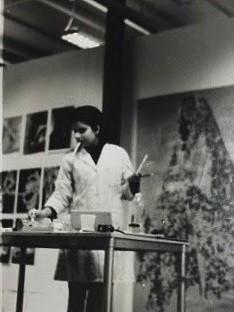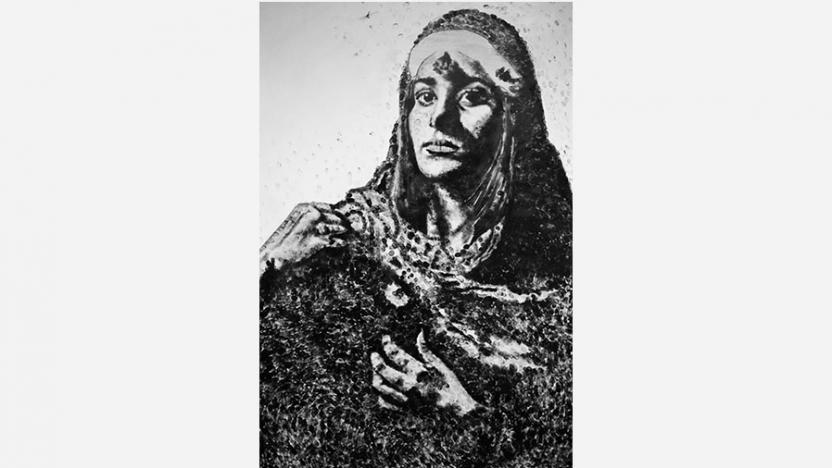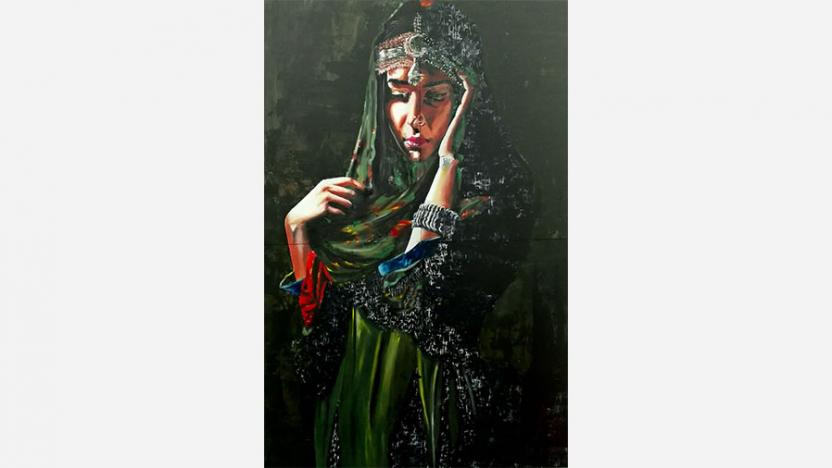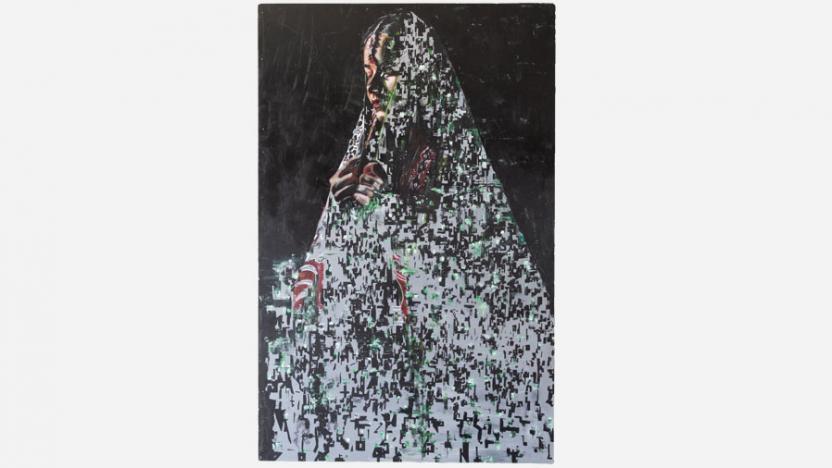
Fatima Khan
Instagram: @khanfatima646
About the artist
Fatima Khan is a Fine Artist known for her large-scale representations of women based on her series of ‘The Female Gaze’. Graduating with BA Honours Fine Art from Kingston School of Art in 2020, she uses her art as a weapon to raise awareness of inequality and injustice in certain cultures from around the world by using strong figures and colours to portray agony and cruelty.
She focuses on power, agency, and control; the constructed rules and systems in some societies that lead to particular behaviour, via forms of dress, access to education, or the right to be heard. She examines why men are considered dominant regardless of the hierarchy and women are seemed to be the weaker ones. Her project also explores how religion is destroyed by such societies, which have substituted the rules of religion for the rules of government. In 2017, Khan was featured in a Newspaper article in Toronto, Canada; where she demonstrated more about women empowerment. Khan was also commissioned to make a logo for a TV channel in 2017 in Toronto, Canada. In 2017 when she first discovered her passion for art at UCA, one of her works was shortlisted to be exhibited at UAL.
Khan is described as a 'risk taker' and isn’t afraid of using her passion for art to demonstrate the issues that are ignored and are neglected by society or the government. In 2017, Khan executed a piece of work with her colleague outside BBC Broadcasting Building. The issue was regarding the ‘Equivalent Pay Gap’ referring to the pay disparity between the men and women inside the building. This provocative performance was executed outside BBC Building for 10 minutes due to security reasons. Five of her recent works from ‘The Female Gaze’ also have been shortlisted for the Bloomberg Contemporaries in 2020.
Five of her works portray the most demonic serial killers in American history such as, Ted Bundy, Charles Manson, Jeffery Dahmer, Richard Ramirez, and David Berkowitz. She demonstrates that painting these killers isn’t a crime, especially for a Muslim female artist like herself, since the media has long been glamorising serial killers and that doesn’t bother anyone but what she has portrayed does. She had used her fingerprints to create these large-scale portraits to demonstrate these are the fingerprints of the victims that were massacred, and these are the expressions of the serial killer the victims saw before they were massacred.
She correlates her drawings of people while they’re asleep which she executed while being a student and commuting early hours. She feels between these portraits draw a deep connection to the large scale villainous portraits of perpetrators and that is ‘The Gaze’ through body language and different demeanours; as well as the notion of invading someone’s privacy without their consent and taking a piece of their soul and preserving it onto a paper somewhat defines what the perpetrators did.


